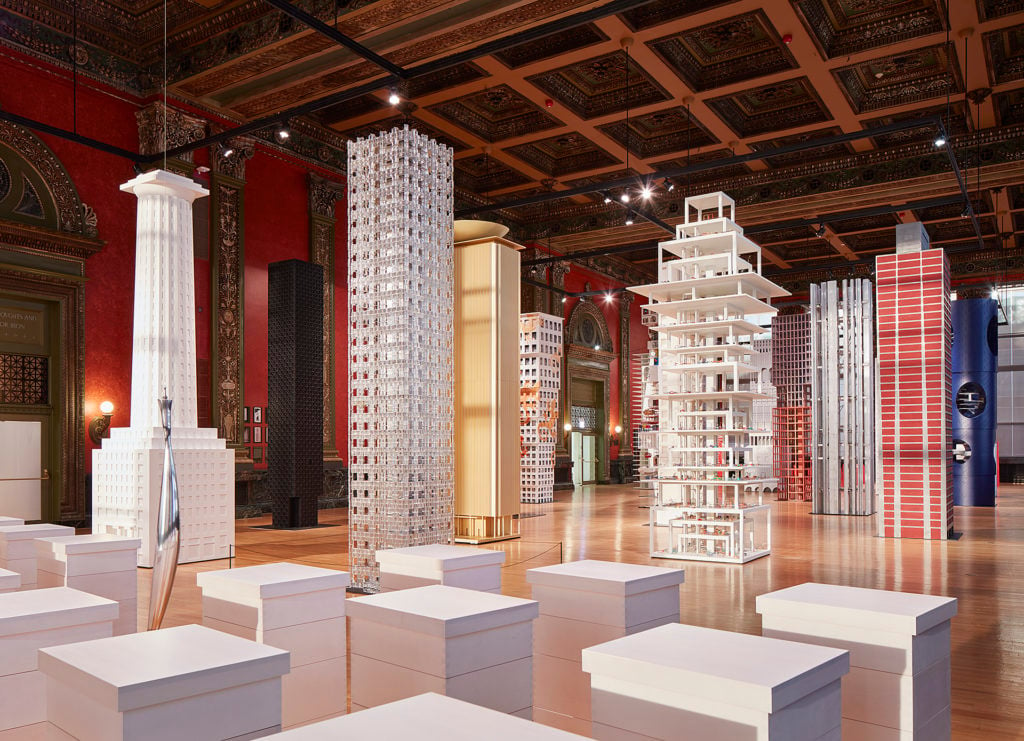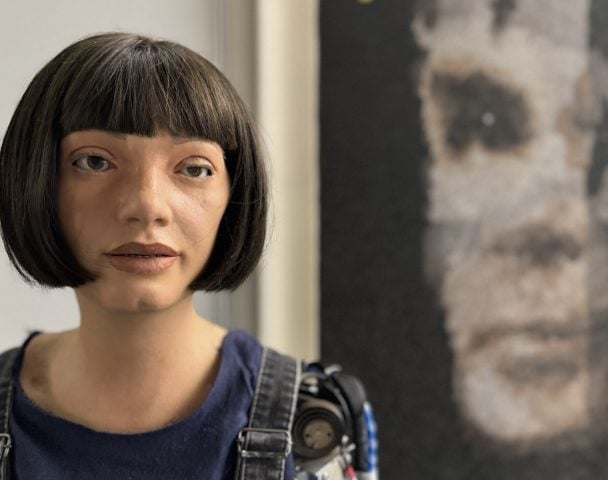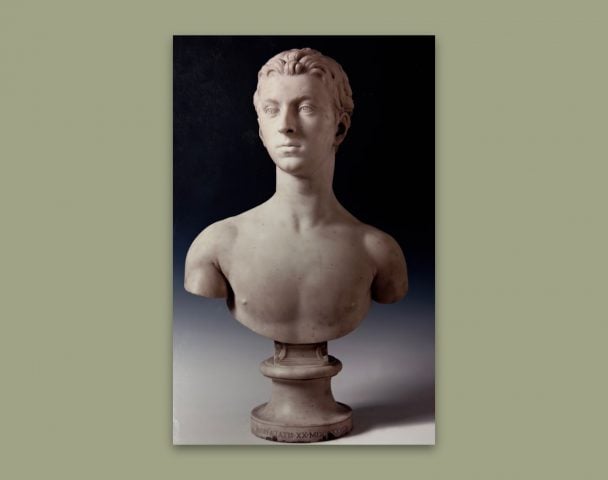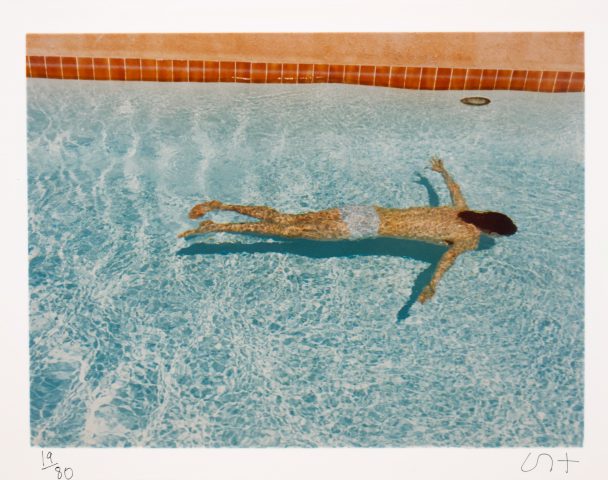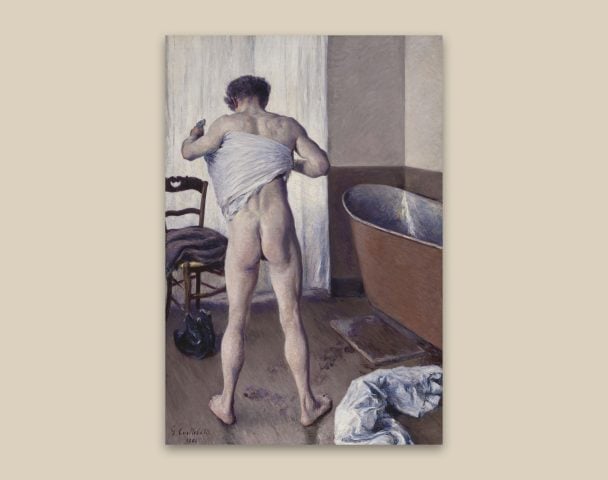The sophomore edition of the Chicago Architecture Biennial, organized by Los Angeles architects Sharon Johnston and Mark Lee, is a lively, idea-rich, and at times visually thrilling exhibition. Featuring more than 100 artists and architects from around the world, it takes place not only in a city known for its architectural history but also in the historic Chicago Cultural Center, a grand, classicizing building that includes the world’s largest stained-glass Tiffany dome.
The organizers’ firm, JohnstonMarklee, boasts various art-world clients, including nonprofits like Houston’s Menil Drawing Institute as well as art galleries like LA’s Various Small Fires. Commissioned artworks appear throughout the biennial, and art even gets pride of place in the show’s title, “Make New History,” which comes from the 2009 book by Ed Ruscha consisting of hundreds of blank pages.
To be sure, artists play a prominent role in this year’s architecture biennial. Below are four—Thomas Demand, Iñigo Manglano-Ovalle, Luisa Lambri, and Marianne Mueller—whose works make significant contributions to the exhibition by engaging deeply with builders and buildings.
Thomas Demand
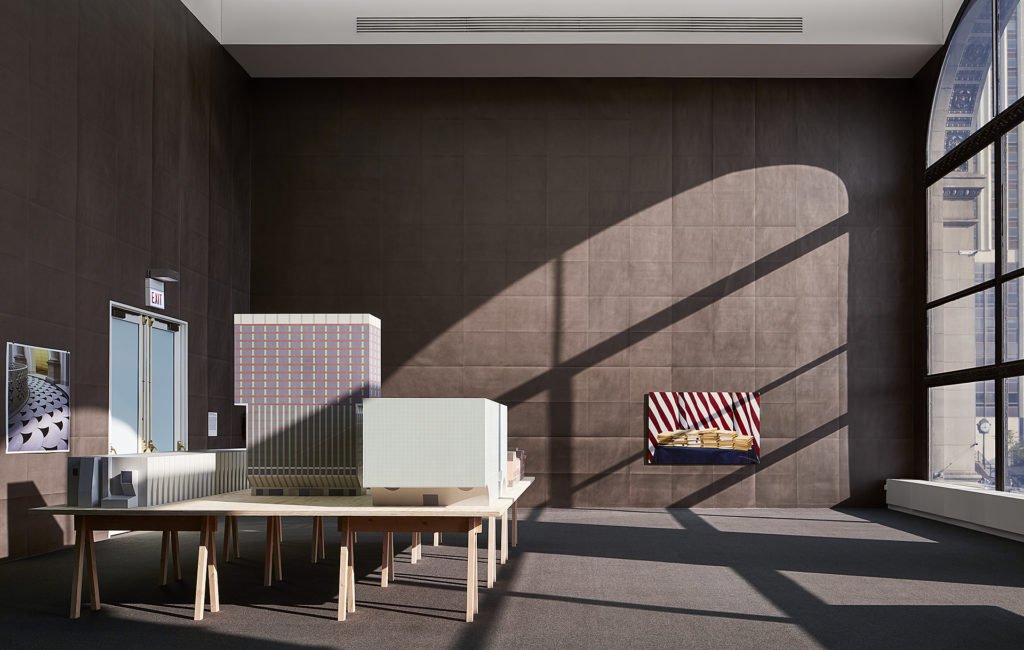
Installation view of Caruso St John with Thomas Demand and Hélène Binet, Constructions and References, 2017, Courtesy of Chicago Architecture Biennial, © Tom Harris.
The German photographer and art star Thomas Demand has worked for decades with London’s Caruso St John Architects; the firm has designed several of his exhibitions. The builders have also been intimately involved with the art world. Among other projects, they designed Damien Hirst’s Newport Street Gallery, London, and that city’s Gagosian outpost.
Demand is showing two of his trademark setup photographs, in which he shoots his own paper models of real architectural settings. Such works have earned him a solo show at New York’s Museum of Modern Art and the honor of representing Germany at the Venice Biennale.
In Presidency V (2008)—created shortly after the election of Barack Obama—the Oval Office is depicted from an angle below the president’s chair. On an adjoining wall hangs Folders (2017), showing the table piled high with papers that served as a prop in a press conference staged by President Donald Trump, supposedly serving as proof of his divestment from his businesses. The contrast is stark and unsubtle.
In an interview with artnet News, Demand described both his own works and the experience of participating in the architecture biennial through the lens of Trump. “You have an architecture biennial in a country where the president is a builder,” he said. “You don’t have to make a political statement, but it’s an invitation.”
Of Trump’s press conference, he said, with a slight smirk, “No one knew how to digest this. But I’ve been talking about fakes for a long time.”
Iñigo Manglano-Ovalle
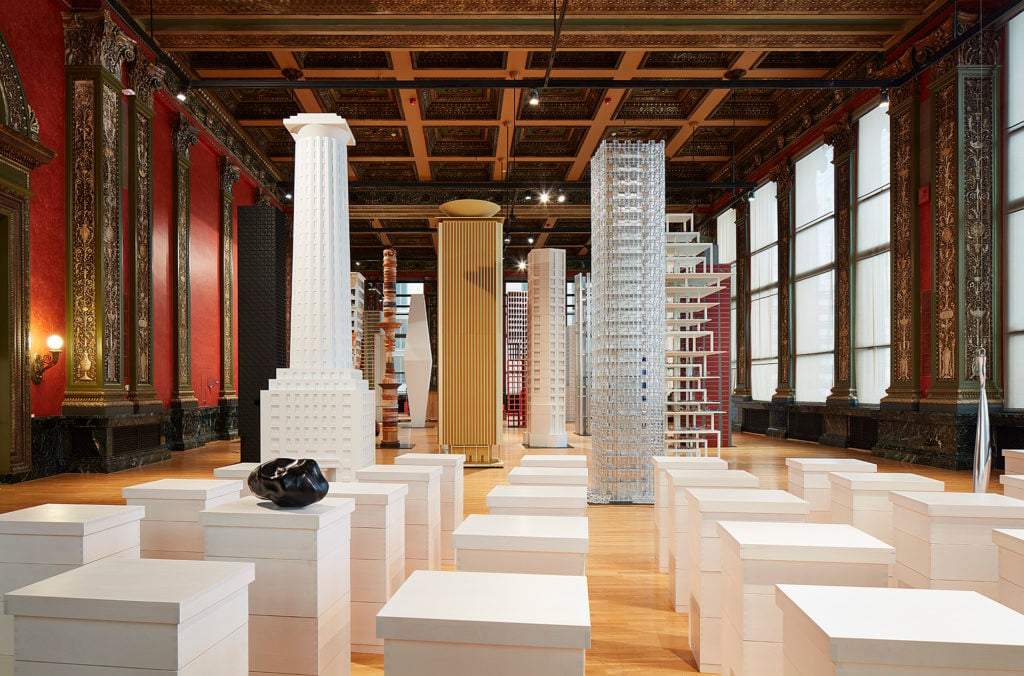
Installation view of Vertical City at Sidney R. Yates Hall and Iñigo Manglano-Ovalle, Beehives with Asteroid and Prototype for Re-Entry (2017), Courtesy of Chicago Architecture Biennial, Steve Hall © Hall Merrick Photographers.
MacArthur “genius” grantee Iñigo Manglano-Ovalle has long found inspiration in the iconic Modernist architecture of Mies van der Rohe, and his works have found a berth in two Venice Architecture Biennales. But it might have been too obvious to include, say, his video Le Baiser (1999) in which he plays a window washer metaphorically kissing Mies’s Farnsworth House.
Instead, his project here, Beehives with Asteroid and Prototype for Re-entry (2017), comments on Modernism more obliquely. In a high-ceilinged gallery whose theme is verticality, his work stresses the horizontal. The work, featuring a large grid of low-slung, square white columns, equally recalls a tiny model of a utopian city and a Minimalist sculpture by Sol LeWitt. They represent a 19th-century design for a beehive box, a way to tame and order the natural world.
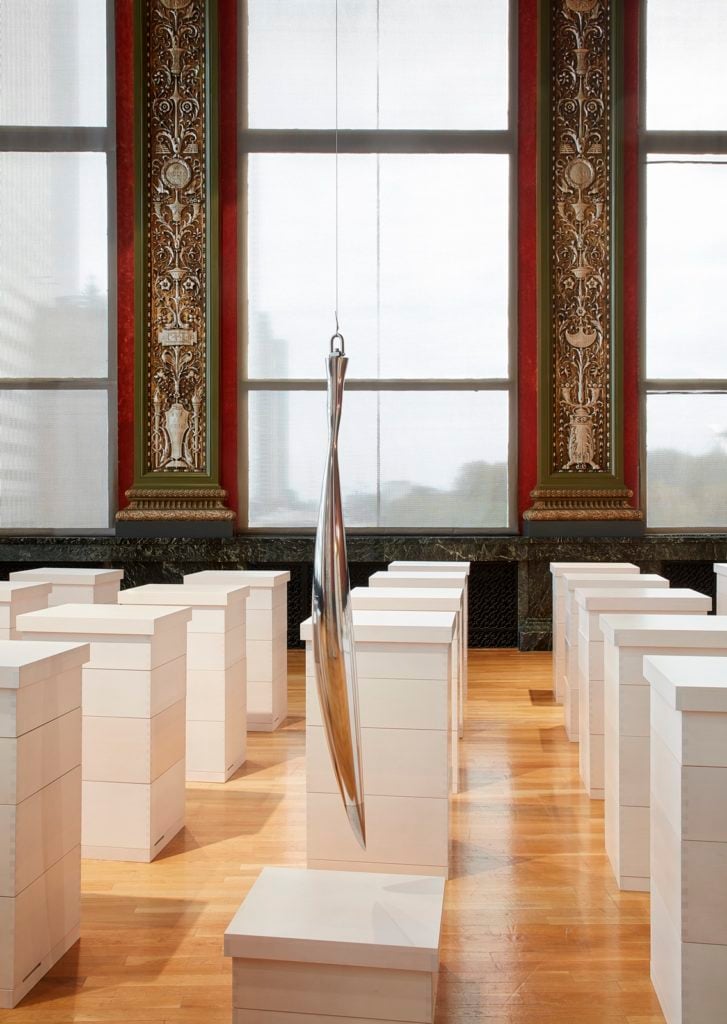
Installation view of Vertical City at Sidney R. Yates Hall, 2017, Courtesy of Chicago Architecture Biennial, Steve Hall © Hall Merrick Photographers.
Two other objects make guest appearances in this hive metropolis. One is a replica of Constantin Brâncusi’s sleek metal sculpture Bird in Space (1932). In an interview, Manglano-Ovalle recalled visiting a military research facility that tests the geometry of ballistic missiles. He joked with his hosts that he’d like to test Brâncusi’s sculpture there as if it were a spacecraft (which he ended up doing). “I posed a hypothetical question,” he said. “If modernity hasn’t left us but has just been out there in orbit, what if that orbit decayed and it reentered our atmosphere?”
Another replica represents the asteroid Apophis, which was briefly calculated to have a chance of striking Earth in the year 2029. And yet the replica, when placed in combination with Bird in Space, unexpectedly comes to resemble Brâncusi’s Sleeping Muse. In all, the work presents a meeting of military research, astronomy, animal husbandry, Modernism, and industrial design that threatens to spin apart.
“My work is kind of scattershot,” the artist said, “but purposely.”
Luisa Lambri
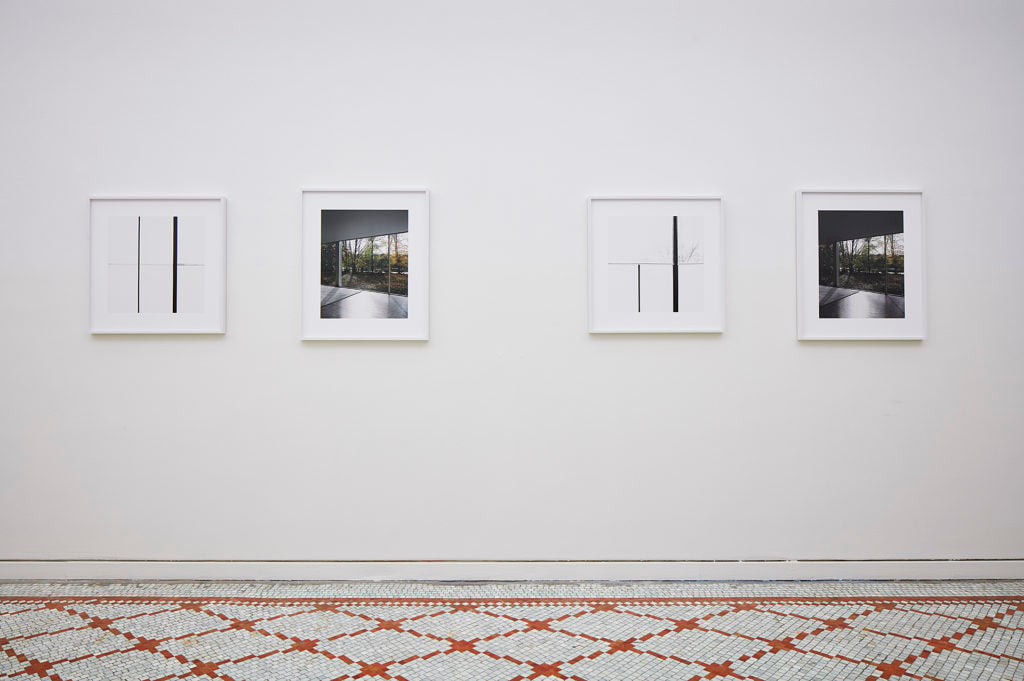
Installation view of Luisa Lambri, Courtesy of Chicago Architecture Biennial, Steve Hall © Hall Merrick Photographers.
A series of graceful, minimalist photographs shot inside Mies van der Rohe’s Farnsworth House, now open as a museum, constitutes Luisa Lambri’s contribution. The 1945 building, in Plano, Illinois, is exemplary of the streamlined Modernist style. The artist, an Italian native living in Los Angeles, is a veteran of two Venice Biennales.
Several photos contrast the structure’s all-white interior with the fall landscape visible through floor-to-ceiling windows. Others are even more stripped down, focusing on where horizontals and verticals meet to create compositions reminiscent of Piet Mondrian’s.
Lambri removed the furniture from the building, which she had for years longed to photograph. While making the setting seem more generic, that step also made it somehow more her own, she told artnet News.
Buildings are her typical subject, but her works are far from conventional architectural photos. Delineating the distinction, she said, “I use architecture to make images.”
Marianne Mueller
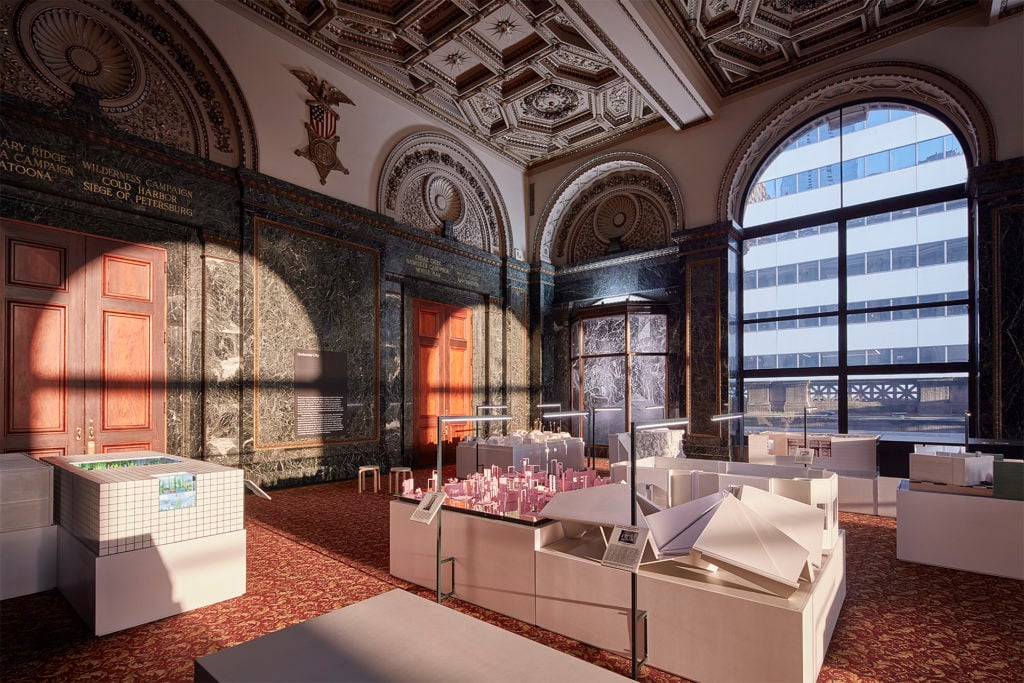
Installation view of Horizontal City at G.A.R. Hall and Marianne Mueller’s G.A.R. Hall vitrines, Courtesy of Chicago Architecture Biennial, © Tom Harris.
If Lambri’s approach to photographing architecture is on the reverent side, Marianne Mueller’s tends more toward the perverse. In a gallery devoted to architectural models stressing horizontality, I found her installation of photographs in the room’s built-in vitrines hard to find, even with a map. They blended in so well perhaps because she shot each of four photographs in the Cultural Center itself.
Her subjects are willfully understated. In the sublime hall with the Tiffany dome, she shot nondescript columns. Another vitrine displays a shot of a corner of the room where the photos are installed. (The photographs provide a kind of photographic analogue to Andrea Fraser’s deliberately offbeat museum tours.)
“The room is dedicated to various military conflicts,” Mueller said, pointing out where names of those battles are inscribed on the walls. “Vitrines are often used as historical displays, but I showcase the elements of the building you might not see.”
Though the photographs are imposing at something like 12 feet high, Mueller employs low-rent materials, like cheap film she develops at Walmart, and the prints themselves will be discarded at the end of the show’s run.
“You don’t really see them, but you’re irritated when you walk into the gallery,” she said, which certainly rang true. “It’s a bit passive-aggressive.”
The second Chicago Architecture Biennial, “Make New History,” is open at the Chicago Cultural Center, 78 East Washington Street, through January 7, 2018.
